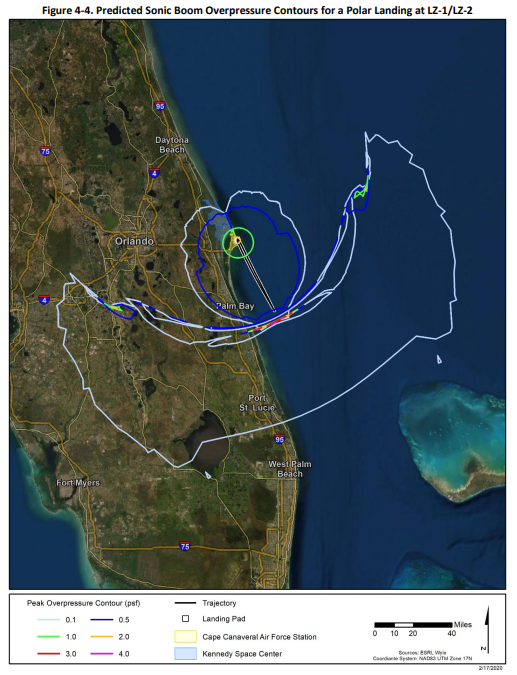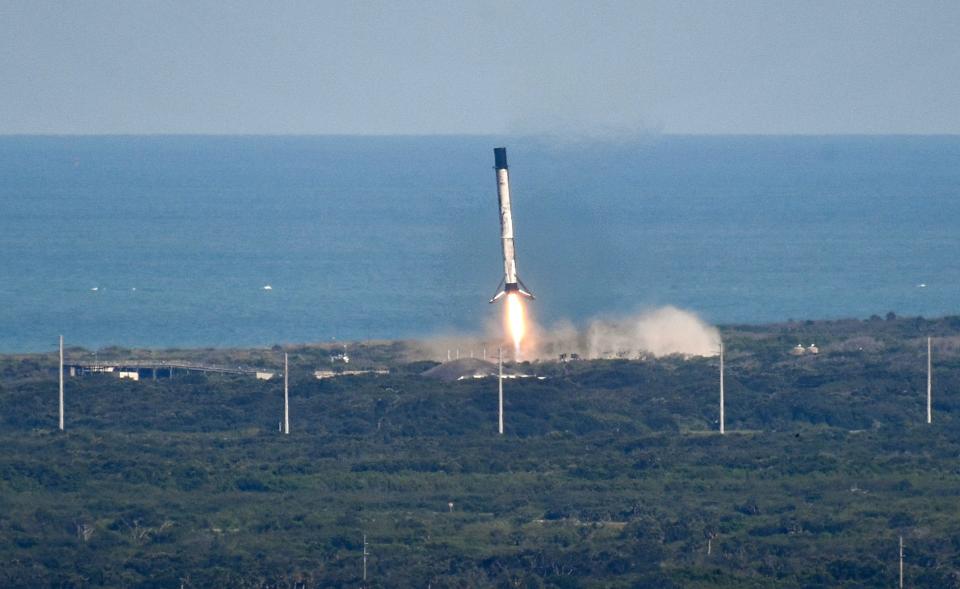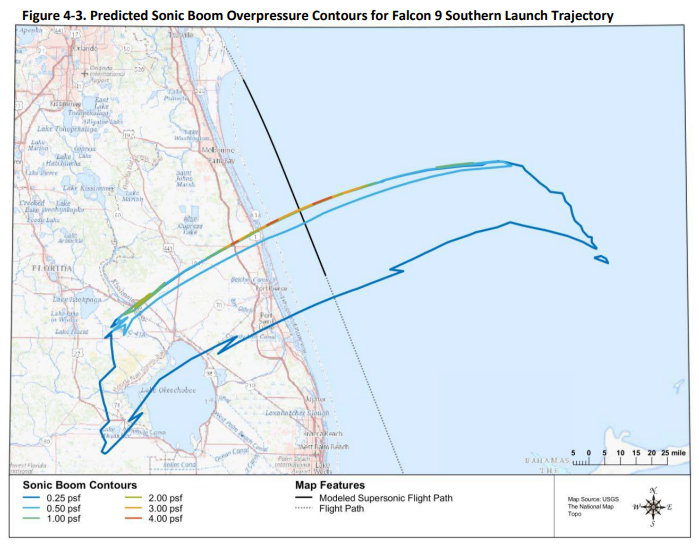Sonic boom or thunder? What you need to know as SpaceX ramps up Cape Canaveral landings
Expect to hear more low rumbles along the Treasure Coast in coming months, but they may not be from summer thunderstorms.
SpaceX — the commercial spaceflight company that conducts launches from Cape Canaveral Space Force Station, the Kennedy Space Center and bases in California and Texas — has announced changes that will bring more sonic booms to Florida's East Coast and parts of Central Florida.
For several years, Falcon 9 boosters have landed on drone ships in the Atlantic Ocean after launching spacecraft. Now those boosters will be landing more frequently at Cape Canaveral.
SpaceX sonic booms: Florida will hear more sonic booms as SpaceX squeezes performance out of Falcon 9 rocket
Rocket launch schedule: Upcoming Florida launches and landings
What is a sonic boom?
A sonic boom is a thunder-like noise heard on the ground when an aircraft or other type of vehicle flies faster than the speed of sound, according to National Oceanic and Atmospheric Administration.
Air reacts like fluid to supersonic objects. As those objects travel through the air, molecules are pushed aside with great force and this forms a shock wave, much like a boat creates a wake in water. The bigger and heavier the aircraft, the more air it displaces.
How close is the Treasure Coast to Cape Canaveral Space Force Station?
Cape Canaveral is located in Brevard County, north of Treasure Coast. Here are the average distances to each county, according to Apple Maps:
74 miles from Indian River County
99 miles from St. Lucie County
120 miles from Martin County
Sonic booms are not rare on the Treasure Coast. A sonic boom from SpaceX's Falcon 9 rocket launch at Cape Canaveral was heard across Indian River County on Jan. 13, 2022.
Less than three weeks later, another sonic boom reverberated across Vero Beach and Indian River Estates on Jan. 31.
Are there single, double or triple sonic booms?
While some people on the ground may hear them as a single sonic “boom,” many sonic booms produced from NASA flights are heard as distinct “double” booms.
The Falcon 9 rocket generates a triple boom, though it sounds more like a single boom by the time it reaches the ground.
How many sonic booms will occur over Cape Canaveral?
Over the course of a year, there could be a half-dozen more boosters returning to landing zones 1 and 2 — and just as many sonic booms when the 162-foot-tall boosters return.
SpaceX launched 61 missions in 2022 averaging one launch every six days, according to the SpaceX Twitter.
SpaceX CEO Elon Musk said the spaceflight company would shoot for 100 launches in 2023.
How far will the sonic booms be heard?

A sonic boom depends upon several factors:, including altitude, speed and the atmosphere. The shape, size and weight of the aircraft or rocket also influence sonic booms, according to NASA.
The width of the boom “carpet” is about 1 mile for each 1,000 feet of altitude. So something flying supersonic at 50,000 feet can produce a sonic-boom cone about 50 miles wide, although the sonic boom will be weaker in some areas.
The loudest sonic boom will be directly underneath the aircraft or rocket, and decreases as the distance from the flight path increases, until it ceases to exist.
What other factors determine where sonic booms can be heard?

The direction of travel and the strength of shock waves are influenced by wind, speed, and direction, as well as by air temperature and pressure.
Why is SpaceX landing at Cape Canaveral instead of on drone ships?
"It's advantageous to get the first stage back to the landing site because then we don't have to worry about recovery weather and the drone ship," said Bill Gerstenmaier, SpaceX vice president of build and flight reliability.
Previously, there wasn't enough fuel in the booster to make it back to the Cape. Now there's not only enough fuel but enough to make it with a comfortable margin.
How many times has SpaceX landed the boosters?
Since the first touchdown at the Cape in 2015, SpaceX has successfully landed boosters 192 times.
Are sonic booms dangerous?
Though startling, sonic booms are largely harmless to humans, animals and infrastructure.
However, they can be damaging if "overpressure" — the sudden onset of a pressure wave after an explosion — is high enough.
Can sonic booms damage your home or break windows?

Sonic booms are measured in pounds per square foot of overpressure, according to NASA. As overpressure increases, the likelihood of structural damage and stronger public reaction also increases. Tests, however, have shown that structures in good condition have been undamaged by overpressures of up to 11 psf.
1 pound of overpressure: At one pound overpressure, no damage to structures would be expected.
1-2 pounds overpressure: Overpressures of 1-2 psf are produced by supersonic aircraft flying at normal operating altitudes. Some public reaction could be expected above 1 pound per square foot.
2-5 pounds overpressure: Rare minor damage may occur with 2-5 psf overpressure.
An FAA report on the impact of Falcon 9 launches concluded the highest overpressure levels, which would occur offshore, could reach 4.6 psf.
A large portion of Florida, from south of Orlando to south of Port St. Lucie, could see overpressures of 0.1 psf. The majority of the land area within the sonic boom footprint is expected to experience overpressures of 0.25 to 0.5 psf, similar to distant thunder, the FAA report said.
The United States Air Force also conducted an independent sonic boom analysis for Falcon 9 polar missions and determined predicted damage to public areas is very low.
Contributor: Emre Kelly, Florida Today
This article originally appeared on Florida Today: SpaceX Falcon 9 rockets landing at Cape Canaveral bring sonic booms
